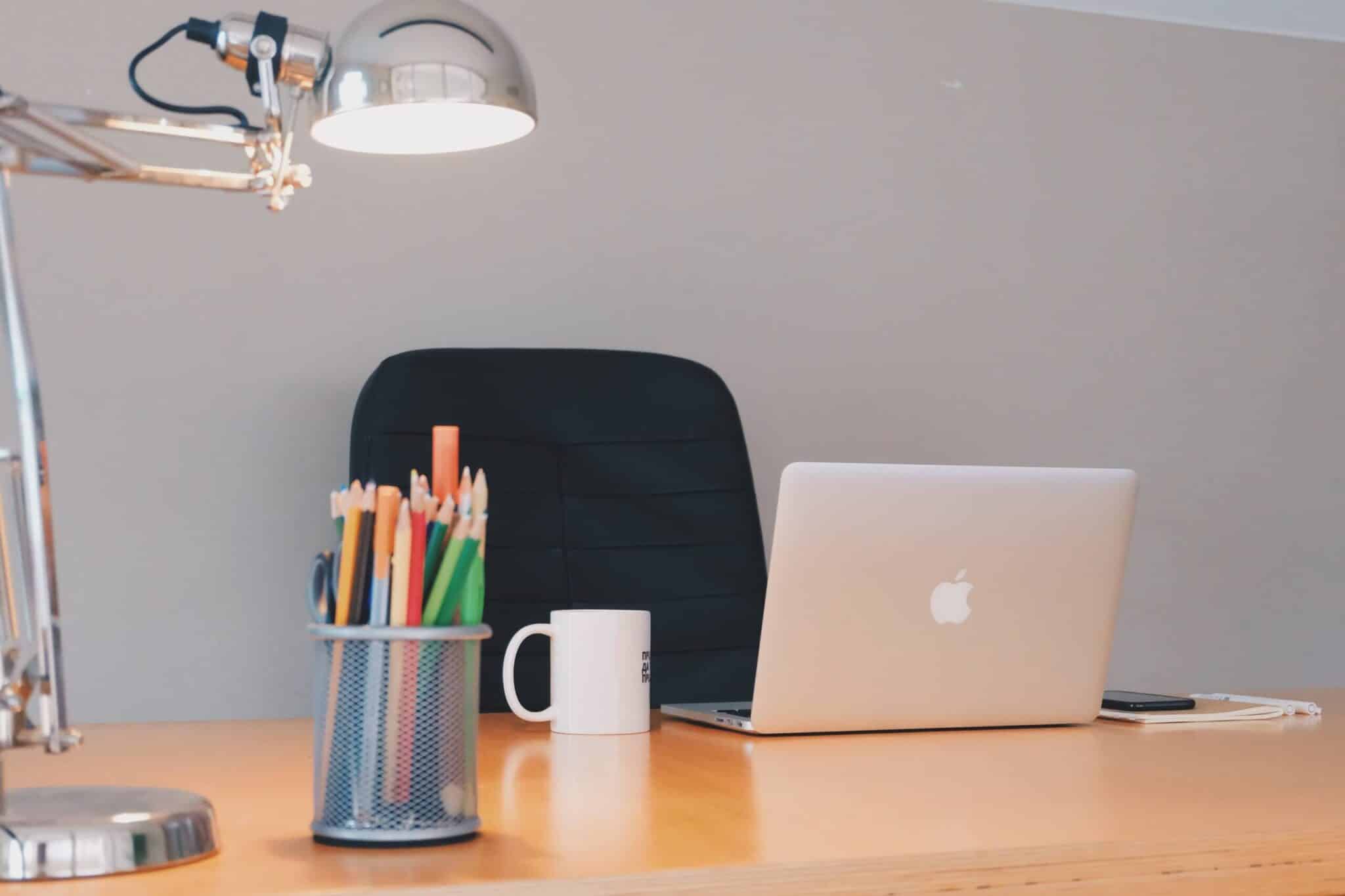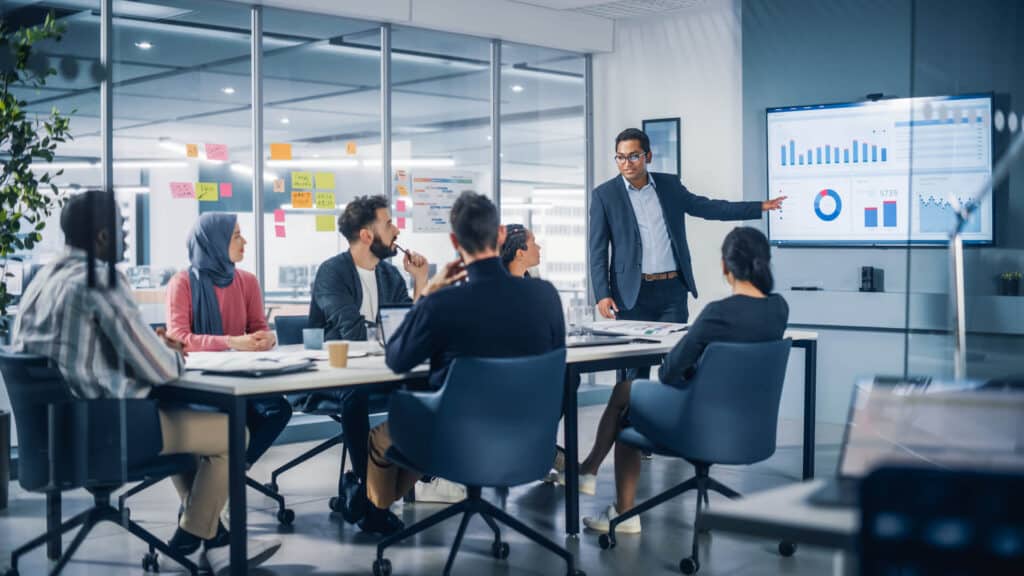 It has been estimated that employers pay almost $1 billion per week for direct workers’ compensation costs alone*. An investment in workplace ergonomics can help prevent injuries and illnesses caused on the job.
It has been estimated that employers pay almost $1 billion per week for direct workers’ compensation costs alone*. An investment in workplace ergonomics can help prevent injuries and illnesses caused on the job.
In this Workplace Unplugged interview, we had the opportunity to speak with ergonomics specialist, Dr. Julie Landis. Previous President & CEO of Ergo Concepts and now Vice President of Business Development at Briotix, Julie started out her career as a clinical physiotherapist.
Initially, her patients were bringing their work challenges to her asking for help and naturally, specializing in ergonomics became the next step for Julie.
We were eager to ask Julie about the changes she has seen in her industry over the years and how they have been impacting the design of office workplaces. She says technology has been the largest influence.
JL: Technology and the changing influence of technology have had a huge impact. We have just become so tethered to our desks. We have a phrase at Briotix, ‘automation vs locomotion’. Everything is automated, we can work anytime, anyplace. We can order books, and food, and everything online. And this constant interaction with technology has huge negative health effects (cancer, heart disease, diabetes, mental health, vascular disease) which usually start out as just aches and pains and discomfort.
With technology automating more and more of our daily lives and activities, what steps can we take to keep our workplaces healthy? We asked Julie for the top three recommendations that facilities managers should keep in mind when configuring their office spaces.

Her first tip for FM’s is to create open work spaces and collaborative work environments that encourage people to get up and move.
JL: Create open spaces that are inviting, intriguing and encourage movement and position change. Because of all this mobile device use, many people don’t even work at a traditional desk anymore. As you create new environments, you need to have spaces where people can pick up their phone, tablet or laptop and go get in a decent posture in some sort of a communal move away space, whether it is a communal band of standing desks or standing countertop space. Moving away with laptops and other mobile devices to alternative spaces can be a great way to refocus and stretch.
However, open environments don’t work for everyone. Julie tells us how in general these open environments are working for a large majority of people but they don’t always work for everyone. We need to create spaces for people to go to, to de-stress, to get away from the crowd. But also think about and not ignore, people who have individual needs within our populations.
JL: For instance, think about open environments for the aging population, and how is an open environment going to work for someone who has anxiety or certain mental illnesses? Are these open environments for some people creating more stress?
Leading into her second tip for FM’s, adjustability. Understanding the different needs of your workforce and creating options to accommodate the differing requirements of each of your staff is critical in designing healthy workplaces.
JL: Involve employees, supervisors and ergonomic stakeholders, including vendor partners in design and equipment decisions. Get to know your populations and the challenges they may be having: discomfort, engagement, general health, work tasks and risky behavior. In the US, we have an aging workforce and the rise of the millennial generation happening simultaneously. Knowing basic data about employees helps to drive informed decisions, encourage and motivate employees and track program success.
But, what it all comes down to, is ensuring that your people are getting up and moving throughout the day.
JL: Ultimately we can provide stations that adjust and create movement options, that is a huge thing in ergonomics. If we can create adjustability we are going to accommodate to a larger percentage of the population. But part of that is also teaching people the importance of getting up and moving away from their desk.

And her last tip for FM’s? A traditional workstation oldie but a goodie.
JL: Provide a quality workstation chair! It’s the foundation of a sound workstation. With low back pain being one of the main causes of workplace discomfort, the chair really does a lot to help improve that situation for people.
And with the rise of the standing desk, we wanted to know standing desk or ergonomic chair?
JL: When we look at the Baby Boomers, and the Generation X folks aging right after the baby Boomers, I think investing in a great ergonomic chair should be first and foremost. Because what I tell people is ‘everyone can get up and move from their desk’. We recommend every 20 minutes everybody just stand and sort of shake it out, for a minute or two, a couple seconds if you have to and then sit back down. And those simple posture changes can give you the same benefits of a standing workstation.
We asked Julie the most common mistakes she sees in the workplace, and her advice to avoid these pitfalls.
JL: Being in a reactive mode is probably the largest challenge. Often employers wait for employees to raise a hand before they begin to address ergonomics. Getting a jump start on the process begins with easy steps like policy language, equipment standards, informing employees what to do and who to tell if they begin to feel discomfort and training employees on good work practices, signs and symptoms of musculoskeletal disorders, proper lifting and other important topics. All of these initiatives begin to shift the process from reactive to proactive. Finding a good partner who can help lead the way in some of these areas is a huge step.

Aware of the fact that ergonomics has a tendency to be associated with ordering of a lot of expensive equipment, Julie tells us that while providing equipment is helpful, especially in some serious cases of discomfort, many improvements can be made with knowing how to set up a work environment and encouraging behavior changes. However, she still sees managers ignoring their worker’s needs.
JL: When equipment is recommended it’s important to follow through and order what has been recommended. If you don’t understand what is recommended or budgets are a concern talk with your ergonomist, as there are usually options and workarounds. And educating employees can be a relatively inexpensive process method as well – educational seminars and train-the-trainer, where we educate an in-house staff on how to be a front line of doing baseline evaluations. So there are ways to make it more than just the equipment side of it.
The other major pitfall Julie often comes across is the failure to measure the effectiveness of ergonomic programs, which is critical to building an effective business case for implementing and maintaining them.
JL: There is no benchmarking of program success. How do we know a program is making a difference? What are the goals we want to accomplish? We need to establish these parameters at the beginning and adjust based on results. Such as reduced discomfort, improved productivity, reduced cost of the ergonomics program, improved general health measures, increased utilization of the program. Measures can be different for different organizations. That really is a business case for ergonomics; to either start a program in the first place, to build one or to keep one going. Sometimes people have a hard time getting one up and running because they just aren’t building the case.

We asked Julie about her thoughts on the impact of Millennials, the now largest working population (just under 55 million!) on office design and ergonomics choices in the workplace. She believes they are driving many of the technological changes we are seeing in the workplace today.
JL: They are the foot soldiers of technology change and that is driving every aspect of how we interact with technology at work, from the devices we use (more laptops, mobile phones and tablets) to how we work (more open spaces for collaborative and social work & teleworking options) to advances in equipment options: tablet arms, sit/stand solutions for laptop users, backpacks to carry them in, to more apps and software to help remind us to get up and move! Managers and executives need to study and understand the unique capabilities of millennials to engage and motivate them.
As for the biggest trends in workplace ergonomics in the near future? Julie says it will be all about data, data, and more data.
JL: There is a huge focus on data mining. I think we’ll see information gathering from many sources in an effort to understand, and drive programs and exact change. People want to understand who the employees are, what are the risks involved, what are the programs we need to administer based on data. This is going to help companies make more informed decisions.
Julie tells us how helping people has always been at the heart of what motivates her. It was what motivated her to initially enter the field and remains the best part of her job.
JL: The impact of our engagements can be the difference in someone feeling like they can get through their workday feeling better or it could mean saving corporations millions of dollars. Each of those makes me extremely proud. Part of our corporate value statement says that we will do work that our mothers’ would be proud of and my mom is proud of the work I do. I think that’s a great litmus test.
Julie is always interested in connecting with clients, industry leaders and vendor partners in order to discuss their ideas, goals and objectives as well as new ways in which to collaborate and deliver excellence in human performance. If you want to get in touch with Julie you can contact her at [email protected].
What impact has ergonomics made in your workplace? Share your experience in the comments below.

JL: Create open spaces that are inviting, intriguing and encourage movement and position change. Because of all this mobile device use, many people don’t even work at a traditional desk anymore. As you create new environments, you need to have spaces where people can pick up their phone, tablet or laptop and go get in a decent posture in some sort of a communal move away space, whether it is a communal band of standing desks or standing countertop space. Moving away with laptops and other mobile devices to alternative spaces can be a great way to refocus and stretch.
JL: For instance, think about open environments for the aging population, and how is an open environment going to work for someone who has anxiety or certain mental illnesses? Are these open environments for some people creating more stress?
JL: Involve employees, supervisors and ergonomic stakeholders, including vendor partners in design and equipment decisions. Get to know your populations and the challenges they may be having: discomfort, engagement, general health, work tasks and risky behavior. In the US, we have an aging workforce and the rise of the millennial generation happening simultaneously. Knowing basic data about employees helps to drive informed decisions, encourage and motivate employees and track program success.
JL: Ultimately we can provide stations that adjust and create movement options, that is a huge thing in ergonomics. If we can create adjustability we are going to accommodate to a larger percentage of the population. But part of that is also teaching people the importance of getting up and moving away from their desk.

JL: Provide a quality workstation chair! It’s the foundation of a sound workstation. With low back pain being one of the main causes of workplace discomfort, the chair really does a lot to help improve that situation for people.
JL: When we look at the Baby Boomers, and the Generation X folks aging right after the baby Boomers, I think investing in a great ergonomic chair should be first and foremost. Because what I tell people is ‘everyone can get up and move from their desk’. We recommend every 20 minutes everybody just stand and sort of shake it out, for a minute or two, a couple seconds if you have to and then sit back down. And those simple posture changes can give you the same benefits of a standing workstation.
JL: Being in a reactive mode is probably the largest challenge. Often employers wait for employees to raise a hand before they begin to address ergonomics. Getting a jump start on the process begins with easy steps like policy language, equipment standards, informing employees what to do and who to tell if they begin to feel discomfort and training employees on good work practices, signs and symptoms of musculoskeletal disorders, proper lifting and other important topics. All of these initiatives begin to shift the process from reactive to proactive. Finding a good partner who can help lead the way in some of these areas is a huge step.

JL: When equipment is recommended it’s important to follow through and order what has been recommended. If you don’t understand what is recommended or budgets are a concern talk with your ergonomist, as there are usually options and workarounds. And educating employees can be a relatively inexpensive process method as well – educational seminars and train-the-trainer, where we educate an in-house staff on how to be a front line of doing baseline evaluations. So there are ways to make it more than just the equipment side of it.
JL: There is no benchmarking of program success. How do we know a program is making a difference? What are the goals we want to accomplish? We need to establish these parameters at the beginning and adjust based on results. Such as reduced discomfort, improved productivity, reduced cost of the ergonomics program, improved general health measures, increased utilization of the program. Measures can be different for different organizations. That really is a business case for ergonomics; to either start a program in the first place, to build one or to keep one going. Sometimes people have a hard time getting one up and running because they just aren’t building the case.

JL: They are the foot soldiers of technology change and that is driving every aspect of how we interact with technology at work, from the devices we use (more laptops, mobile phones and tablets) to how we work (more open spaces for collaborative and social work & teleworking options) to advances in equipment options: tablet arms, sit/stand solutions for laptop users, backpacks to carry them in, to more apps and software to help remind us to get up and move! Managers and executives need to study and understand the unique capabilities of millennials to engage and motivate them.
JL: There is a huge focus on data mining. I think we’ll see information gathering from many sources in an effort to understand, and drive programs and exact change. People want to understand who the employees are, what are the risks involved, what are the programs we need to administer based on data. This is going to help companies make more informed decisions.
JL: The impact of our engagements can be the difference in someone feeling like they can get through their workday feeling better or it could mean saving corporations millions of dollars. Each of those makes me extremely proud. Part of our corporate value statement says that we will do work that our mothers’ would be proud of and my mom is proud of the work I do. I think that’s a great litmus test.
*United States Department of Labour (2016, May 26). Business Case for Safety and Health. Retreived from: https://www.osha.gov/dcsp/products/topics/businesscase/costs.html




